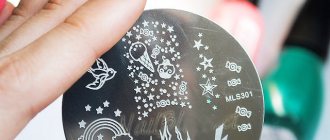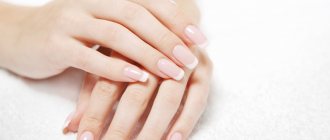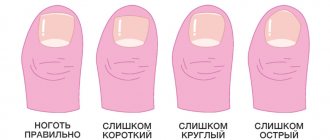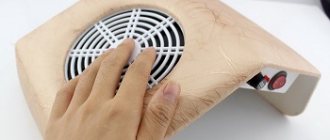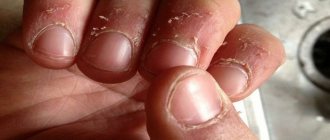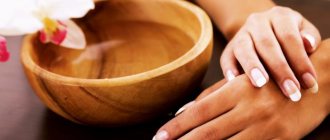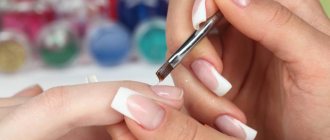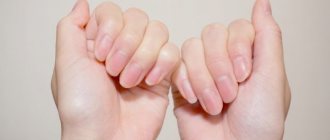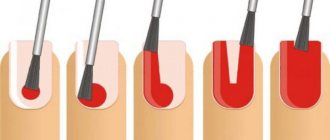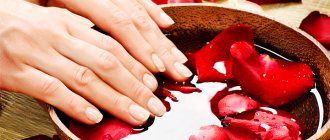Arthritis, arthrosis and other joint diseases require diet. The patient should avoid salty foods and carbonated water. At the same time, a number of products should be introduced into the patient’s diet that help strengthen cartilage tissue and act as a natural pain reliever.
When answering the question of which foods help restore joints, a person suffering from arthritis or arthrosis should pay attention to fatty fish, legumes, olive oil, oranges, cherries, pomegranates, dairy products, green tea, whole grains, brown rice, broccoli, Brussels sprouts cabbage and garlic.
Legumes
To restore normal joint function, inflammation must be eliminated. This is usually the cause of collagen damage and subsequent cartilage destruction. Legumes have excellent anti-inflammatory properties. They contain protein that replenishes collagen reserves. Thanks to this product, cartilage tissue is restored. In addition, legumes contain amino acids that promote cartilage regeneration. It remains to be recalled that legumes include beans, peanuts and peas.
How to strengthen your nails with salt and soda?
Often, due to a lack of minerals, nails begin to peel and break off. Soda and salt baths will help strengthen your nails and give them a snow-white color.
For cooking, it is better to use sea salt - unlike regular salt, it contains a complex of minerals necessary to strengthen the plate.
- Mix 1 tbsp. soda powder and 1 tbsp. fine sea salt. Dissolve the mixture in 2 glasses of warm water.
- Place your hands in the bath and hold for 25-30 minutes.
To strengthen the skin of your hands, you can add 2-4 drops of tea tree or lavender essential oil to the prepared bath.
Brown rice
Brown rice contains a large amount of hyaluronic acid, which is used in the development of injections to treat joint diseases. Hyaluronic acid is a kind of lubricant for joints. It acts as a shock absorber. It is often used to treat minor cartilage injuries. Therefore, foods high in this substance should always be in the diet of a person who has joint problems.
In addition to brown rice, carrots and beef are high in hyaluronic acid.
Execution Rules
Like any procedure, baths must be performed according to certain rules. This is the only way you will get the maximum effect from the procedure. If you are going to take baths with soda, you should adhere to the following rules:
- Before bathing, be sure to remove the old varnish coating and wash your hands well. Do not apply nourishing cream before the procedure, otherwise it will create a film that will impede the access of substances to the nail plates or deep layers of skin.
- If you are going to correct the shape of your nails, do it before the bath. Filing wet nail plates can cause them to peel.
- Decorative manicure should be done no earlier than half an hour after the procedure. This will allow excess moisture to evaporate from the surface of the nails, which will extend the life of the manicure.
- For procedures, you can use regular baking soda.
- Bath water should not be warmer than 40 degrees.
- The procedure takes about fifteen minutes.
- After the bath, hands are thoroughly dried with a soft towel, and cream is applied to the nails and skin.
- The frequency of procedures is 1-2 times a week.
Garlic
Garlic contains many useful components that help restore cartilage tissue and suppress inflammatory processes. This product contains a large amount of sulfur-containing substances, which strengthen cartilage tissue. In addition, regular consumption of garlic prevents swelling and helps cope with pain that occurs as a result of rheumatoid arthritis. It is important not to overuse this product. It is recommended to eat no more than three cloves daily.
Vegetable oil and soda
An oil-soda bath not only helps strengthen nails, but also saturates the skin of the hands with essential fatty acids, making it soft and healthy. It is easy to make at home, because all the ingredients are available in every kitchen.
- Take half a glass of unrefined vegetable oil, heat to warm temperature. Dilute 1 tsp in heated oil. tea soda and stir well.
- Place your hands in the oil solution for 10 minutes. Then you need to put on cotton gloves and hold the mixture for another 5 minutes.
- Remove any remaining mixture with a paper or cotton towel.
Gel polish application technology
Many women choose gel because this coating lasts longer and prevents nails from breaking. But how to properly treat your nails before applying gel polish? First you need to give the desired shape, align the free edge of the plate and thoroughly clean it from dust. If your nails are peeling, you need to treat them with a fine abrasive nail file. Before coating, you can do a manicure, but the surface of the nail should be dry and grease-free.
How to properly treat your nails before gel polish? The top layer of the nail plate is removed with a coarse-grained buff. The surface should remain matte. Do not press too hard on the tool to avoid damaging the nail. The dehydrator further removes nail residues, dust, grease and moisture. After treatment, do not touch your nails with your fingers.
Before applying the base, it is worth covering the nail with a primer so that the adhesion of the gel polish to the nail plate is stronger. Be sure to use a primer if the plates are thin or brittle or if there are delaminations. Then a base gel is applied, which creates a bond between the natural nail and the artificial material at the molecular level, and also protects the plate from coloring pigments.
The layer should be made as thin as possible. The base is dried under an ultraviolet lamp for one minute; when using an LED lamp, only ten seconds is enough. The colored gel is applied in one layer for translucency. If you apply two or three layers, the color will be saturated. But in any case, you need to try to make the layers very thin. After each layer, the marigolds are dried under a lamp.
A finishing gel is required to secure the coating. If the finish coat is not dried properly, the shine may be lost. At the final stage, all that remains is to remove the dispersion layer from the surface of the nail plate using a special liquid.
Whitening nails with soda and peroxide
To quickly whiten nails there is another popular method:
- Mix 3% hydrogen peroxide solution with 1 tbsp. soda powder. Mix the ingredients in a glass container - metal containers may oxidize when an alkaline reaction occurs.
- When the mixture reaches a paste-like consistency, apply the mixture to each nail. Make sure that the paste remains only on your nails - there is no need to apply it to your fingers.
- Let the mixture sit for 2-3 minutes, then rinse well under running water.
Effectiveness of soda
Baking soda is a white, finely crystalline powder consisting of sodium and acid. It can be used externally, in the form of baths, pastes and compresses, or taken internally. As a rule, the substance does not have an aggressive effect and does not cause harm to humans. This is an effective and accessible way to cope with a number of diseases.
Sodium bicarbonate has long been used to treat various diseases in the human body. This action is due to a number of beneficial properties that sodium bicarbonate has:
- has bactericidal and antibacterial effects;
- cleanses;
- softens;
- dries;
- creates or normalizes an acid-base environment.
A large number of options for using soda allows you to choose the most convenient and affordable one, which will help you heal from annoying fungus. But despite all its harmlessness, the product should be used only after consultation with a specialist. Only a doctor can determine the type of fungal infection, the degree of its neglect, and prescribe appropriate medications for treatment. The doctor must decide whether the use of traditional recipes in the treatment of the disease is rational.
When to expect results
If you find a fungus in the initial stages of development, it is not difficult to restore the health of your nail using folk recipes. Typically, a healthy plate begins to grow after 2-3 weeks of manipulation.
However, when treating a progressive disease, it will take several months; for safe exposure, consider the alternation schedule:
- Use iodine solution for 2 weeks.
- Then take a break for a week and use other methods of removing fungus - more gentle ones.
- Reuse iodine for 3 weeks.
- Take a break for 7-10 days.
If the fungus has not completely disappeared, repeat the course and take breaks periodically.
The best recipes with salt
We have collected the best recipes for preparing baths for your hands. Please note that salty nail baths can be prepared with any salt. Therefore, if the recipe does not indicate what salt is added to the solution, choose whatever salt you currently have at home.
Only with salt (universal)
The easiest way to make a nail bath at home is to dissolve salt in warm water at the rate of 1 tablespoon of salt per 1 glass (200 ml) of water. If you use table or magnesium salt, it will definitely dissolve completely. When using sea or pink (Himalayan), a small sediment may remain - this is normal.
With iodine for fungus
One of the most common causes of brittle and split nails is fungus. Iodine dissolved in water along with salt helps against it. For 1 glass of saline solution you will need only 3-4 drops of this product.
With essential oils to strengthen and disinfect
Aromatic oils act as antiseptic and strengthening agents. Best essential oils for nails:
- roses (makes nails shiny);
- geranium (moisturizes, nourishes the cuticle);
- lemon (heals wounds, provides a healthy glow);
- bergamot (strengthens, relieves inflammation);
- eucalyptus (heals wounds, makes the structure of the plate homogeneous);
- ylang-ylang (protects against delamination);
- tea tree (disinfects, treats fungus).
For 200 ml of water you need to add no more than 4-6 drops of aroma oil from one or more plants. If the ether concentration is too high, irritation may occur.
With vitamins for nutrition
Articles on websites dedicated to beauty write about the benefits of external use of vitamins. A bath with vitamins for nails is very different from others - the basis for its preparation is not water, but oil. After all, the most important vitamins for nails - vitamins A and E - are fat-soluble.
Ingredients:
- castor oil - 40 ml;
- sunflower oil - 40 ml;
- olive oil - 40 ml;
- sea salt - 1 tbsp. l.;
- vitamin E in oil - 0.5 tsp;
- vitamin A in oil - 0.5 tsp;
- essential oil (any) - 4-6 drops.
To better dissolve the salt in the oil, heat it in a water bath to a temperature of 40–45 degrees. After preparing the solution, cool it to a comfortable temperature and begin the procedure. After it, you need to wash your hands with soap, for example, with moisturizing soap.
Comment from clinical pharmacologist and general practitioner Lada Stupakova:
“The main advantage of the transdermal method of obtaining vitamins and minerals is that it eliminates the possibility of overdose. The skin and nails will take as many substances as they need for health.”
With citrus juice against delamination and fragility
For 1 glass of water, take the following ingredients:
- 1 tbsp. l. salt;
- 3 tbsp. l. lemon or orange juice;
- 3-4 drops of iodine and 4-6 drops of ether (optionally ylang-ylang).
Attention! If you don’t have lemon or orange at home, you can replace the juice of these fruits with citric acid. Just 1 teaspoon of dry acid is enough to replace the juice squeezed from one lemon.
With herbal decoctions against fungus
A product prepared according to the following recipe will help you heal your nails faster and restore them after fungal diseases:
- Boil 1 glass of water.
- Brew 1 tbsp in it. l. tansy and 1 tbsp. l. wormwood.
- Let the herbs steep. When the infusion has cooled to a comfortable temperature, you need to remove the herbs or strain it.
- Add boiled water so that the volume of the infusion is 200 ml.
- Add 2 tbsp. spoons of sea salt and 5 drops of iodine. Stir.
To achieve a therapeutic effect, you need to take baths every day for 20 minutes for 10–14 days. After each procedure, you should rub tea tree essential oil into your nails.
Attention! A fungal bath should be used in combination with medications that are more effective. The doctor will prescribe them. His recommendations must be followed strictly.
With baking soda for cleansing
To make your nails clean after dirty work, soak them for 15 minutes in a bath prepared from:
- 150 ml warm water;
- 3 tbsp. l. sea salt;
- juice of half a lemon;
- 1 tbsp. l. soda
During the procedure, it is recommended to rub your nails with your fingertips - this will clean them faster.
Bath for nail growth
To speed up nail growth, try making a bath using this recipe:
- Pour about 150 ml warm water into a bowl.
- Add 1 tablespoon of sea salt and stir to dissolve it faster.
- Pour in 1 tsp. lemon juice.
- Add 2 drops each of ylang-ylang, grapefruit, bergamot and pine essential oils to the solution.
- At the end, add 3 drops of iodine and mix everything thoroughly.
To make your nails grow faster, dip your fingers in the bath and hold them for 20 or 30 minutes. After the procedure, your hands should be allowed to dry naturally, then lubricated with cream, cosmetic or vegetable oil. Be sure to anoint the cuticle - it needs special care.
Advice! Do baths every day for 1–1.5 weeks. Then take a week's break and start a new course.
Epsom salt bath for nails
1 gram of nail plate usually contains from 30 to 461 mg of magnesium. When there is a lot of it, nails grow strong and thick. When this mineral is in short supply, separation and thinning of the plate begins. If you want strong nails, strengthen them regularly with a solution of magnesium (Epsom) salts.
To prepare the bath you will need 1 glass of warm water and 1 tbsp. spoon of magnesium salt. To make the procedure more useful and effective, add essential oils, lemon or orange juice, and iodine. You can also use herbal tea instead of water. It will get rid of fungus and saturate your nails with vitamins.
Comment from trichologist Inga Kozyrenko:
“Epsom salt is made up of magnesium, sulfur, oxygen and water. This composition is useful not only for nails, but also for hair. If you take baths with Epsom salts 2-3 times a week, hair loss will stop and your nails will become stronger. “I recommend taking magnesium baths before bed, as they calm the nervous system and help you fall asleep.”
Epsom salt is a popular medicinal and cosmetic product that can be purchased on our website. We offer only high-quality products that have passed all tests. The high quality of the products is confirmed by the necessary certificates, as well as comments from our customers, which remained the effect of magnesium salt on the health of nails and the whole body.
Rules for home manicure
If you do your own manicure, pay attention to some important points:
- Disinfect manicure tools
- It is better to push back the cuticle with a special wooden stick, and postpone the trimmed manicure until visiting the salon.
- Get rid of iron files, they have a very aggressive effect on the nail plate
- File your nails in one direction
- Do not buy cheap nail cosmetics; their composition is often unsafe and has a negative effect on the nail plate.
- Use medicated varnishes, base and coating. This will allow your manicure to last longer, and the varnish applied over the base will lay more evenly and neatly.
All these rules also apply to home pedicures. But even with good self-care, it is recommended to visit a specialist several times a year, especially to perform such complex procedures as shellac, gel polish or extensions.
Follow these simple recommendations and your nails will be strong, beautiful and healthy.
Strengthening nails with potatoes, soda and peroxide
Are your nails starting to peel? It doesn’t matter - potato-soda paste, which can be easily prepared at home, will help strengthen your nails:
- Take half a small peeled raw potato. Grate it on the finest grater or grind it in a blender. You will need 1/2 tsp. potato paste, so even a small piece is enough.
- Mix grated potatoes with 1/2 tsp. toothpaste. Use the simplest paste without flavorings.
- Add half a teaspoon of baking soda and 1/2 teaspoon of 3% hydrogen peroxide. Mix everything well.
- Using a cotton swab, apply to each nail. Leave for 10-15 minutes.
Reviews
Dinara, 31 years old, Moscow. After the illness, vitamin deficiency began due to which the nails began to peel terribly. Expensive remedies hardly helped, so I started surfing the Internet and reading reviews about traditional methods. I chose baths with soda, at first I almost ruined the skin of my hands due to frequent use, but then I selected the optimal number of procedures and everything got better.
Polina, 27 years old, Saratov. I recently learned about baking soda for nails. I thought it was only used in baking, but it turned out to be an excellent whitening agent. After baking soda, the nails are shiny, smooth and do not flake.
The effect of soda on infection
Sodium bicarbonate has long been considered a proven remedy that effectively helps cope with fungal infections. The food product, due to its alkaline environment, reduces acidity, negatively affecting infection. Over time, this leads to the death of the fungus.
Alkali softens the nail plate, disinfects, damaging harmful microbes. By drying, it helps to get rid of spores that have become attached to the skin. The healing process is significantly accelerated. By forming an alkaline environment, it prevents the development of harmful microbes.
The antiseptic effect of household soda allows you to cope with superficial fungal infections and soften the skin around the fungus so that the drugs used after the soda penetrate as deeply as possible into the tissue, killing the infection.
The best option for using soda solutions is their complex use in conjunction with drug therapy.
Compresses with sodium bicarbonate, acting on the lesion, destroy them, increasing the effectiveness of the drugs. To prescribe a course of therapy, you must consult a doctor.
How to treat fungus with baking soda
Typically, a fungal infection on the nails manifests itself in various symptoms, which are reflected in the deformation of the natural nail plate, changes in its external condition and structure. As the fungus progresses, it becomes more difficult to cure, so you need to see a doctor right away.
There are several stages of disease progression:
- First stage. The bed becomes yellow, uneven, dark spots and numerous detachments appear. There is a risk of ingrowth formation.
- Active form. The fungus progresses, the nail is gradually destroyed and becomes very thick.
- Advanced stage. Inflammatory processes can completely destroy the nail bed, spread to bone tissue, and to the skin of the hands/feet.
Treatment of nail fungus with soda can be used, regardless of the form of development of the damage. However, at the first signs of fungus, soda is used as the main medicine, and with an active and advanced form - for additional restoration of a natural pedicure.
There are no contraindications to the use of soda for health reasons, except for an allergic reaction to the component itself, but this is rare.
The component has several directions of impact on the contaminated area:
- Antibacterial. Preventing further proliferation of pathogenic microorganisms and fungal progression;
- Disinfectant. Cleansing the nail plate from bacteria, influencing them by destroying the cell membrane;
- Restorative. Normalizes surface microflora, restoring the acid balance, which reduces the likelihood of re-formation of fungus;
- Deep penetration into the lesion and gradual elimination of inflammatory processes.
The main effect of soda is to stop the reproduction of microorganism spores, which is why the disease stops progressing and increasing.
Also, if the fungus is found only on a girl’s natural manicure, the use of the component prevents it from spreading to the sensitive skin of the hands/feet and the gradual destruction of the nail bed.

